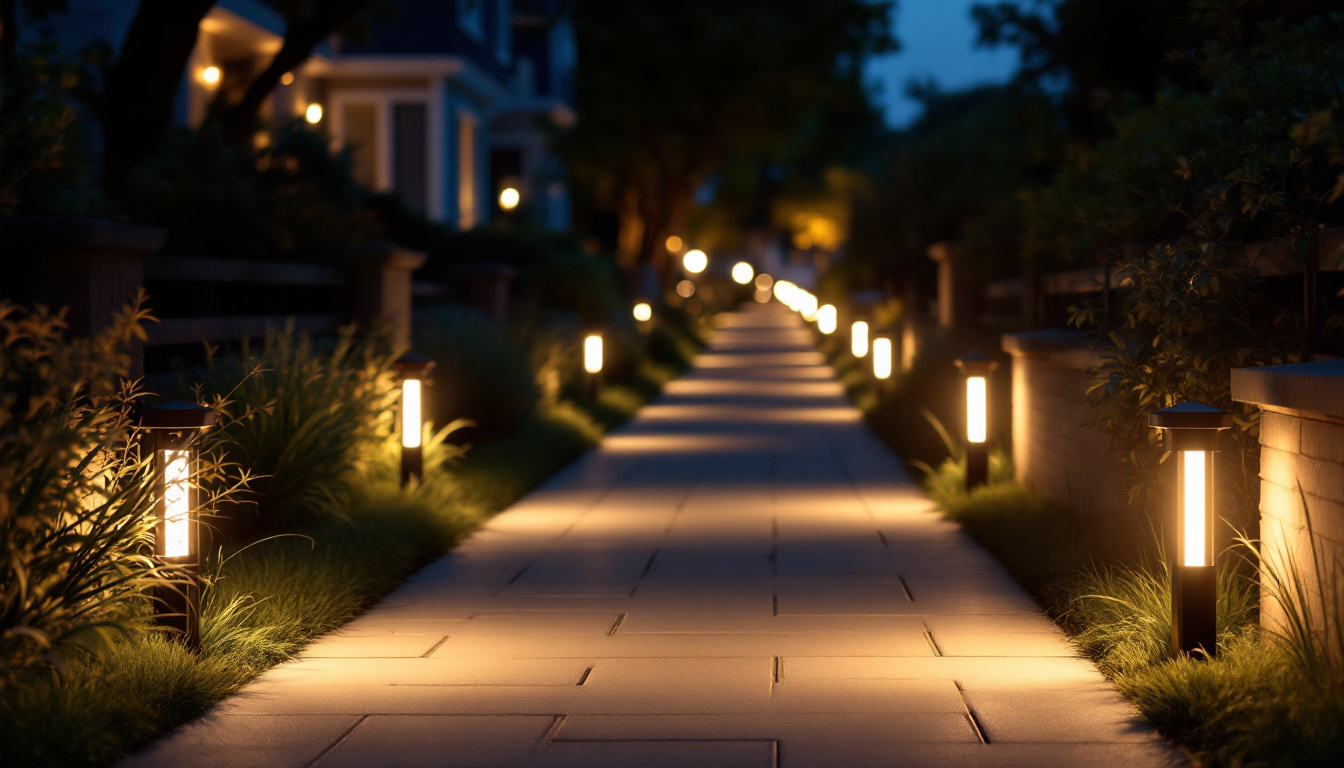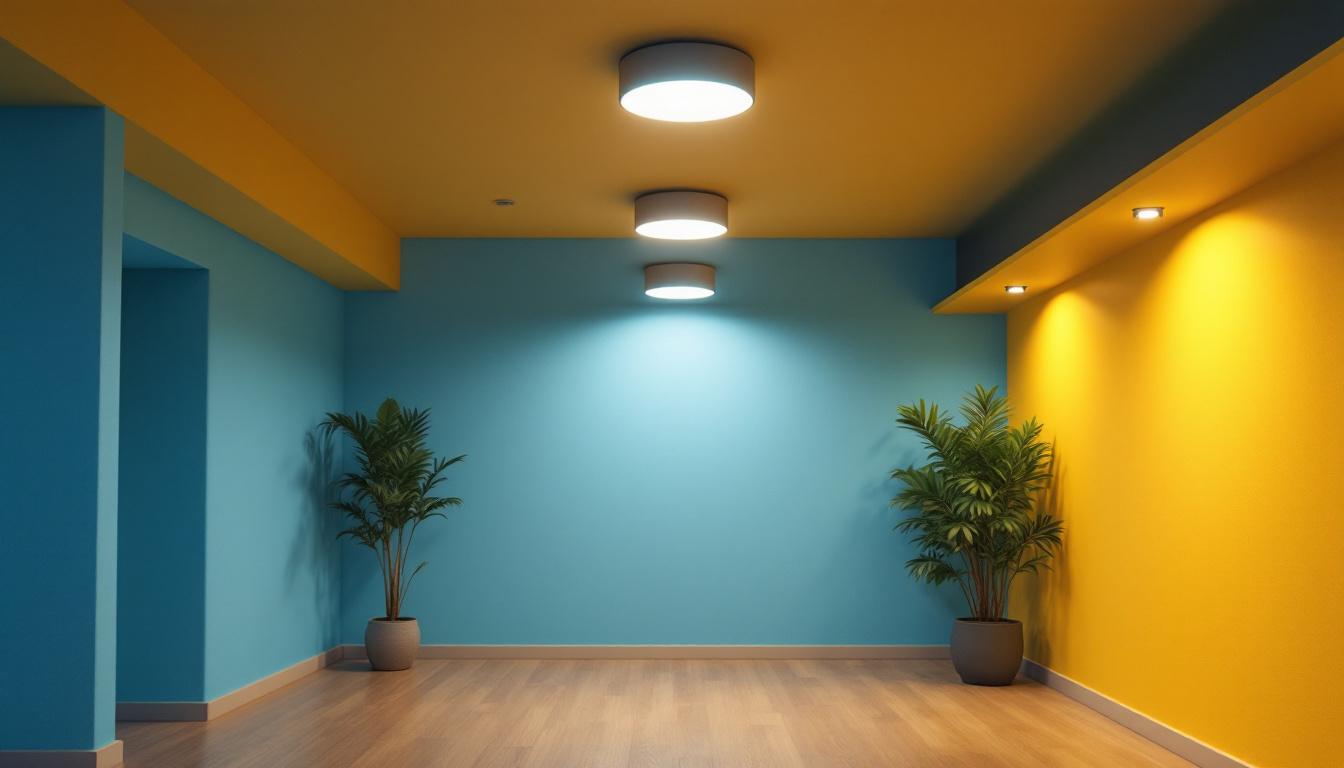
In the world of outdoor lighting, sidewalk lights play a crucial role in enhancing safety, aesthetics, and functionality. For lighting contractors, mastering the art of sidewalk lighting can significantly impact project outcomes and client satisfaction. This article explores essential resources and strategies that lighting contractors can leverage to excel in this specialized area of their craft.
Before diving into the resources available, it is vital to understand the purpose and benefits of sidewalk lighting. Sidewalk lights serve multiple functions, from illuminating pathways to enhancing the overall ambiance of outdoor spaces. They ensure safety by preventing accidents in poorly lit areas and contribute to the visual appeal of residential and commercial properties. Properly designed lighting can transform a simple walkway into an inviting passage, encouraging evening strolls and outdoor gatherings.
Moreover, sidewalk lighting can also enhance security by deterring potential intruders. Well-lit sidewalks create a welcoming environment, encouraging pedestrians to navigate spaces comfortably. The presence of light can significantly reduce the likelihood of crime, as illuminated areas are less appealing to would-be offenders. Understanding these aspects is the first step for lighting contractors in mastering sidewalk lighting. Furthermore, the aesthetic choices made in lighting design can reflect the character of the neighborhood, fostering a sense of community and pride among residents.
There are various types of sidewalk lights available, each designed to meet specific needs and aesthetics. Common options include bollard lights, path lights, and in-ground lights. Bollard lights are often used in commercial settings, providing a modern look while ensuring safety. Their robust design makes them ideal for high-traffic areas, while their variety of styles allows for seamless integration into the surrounding architecture. Path lights, on the other hand, are more versatile and can be used in both residential and commercial applications, guiding pedestrians along walkways with grace and functionality.
In-ground lights, also known as well lights, are embedded into the ground and provide a subtle yet effective way to illuminate sidewalks without obstructing views. These fixtures can create dramatic effects when used to highlight landscaping or architectural features, adding depth and dimension to outdoor spaces. Each type has its unique installation requirements and design considerations, making it essential for contractors to familiarize themselves with the options available. Additionally, the choice of materials and finishes can greatly influence durability and maintenance, ensuring that the lighting remains both functional and aesthetically pleasing over time.
When installing sidewalk lights, several factors must be taken into account. First and foremost is the layout of the lighting. Proper spacing is crucial to ensure adequate illumination without creating overly bright or dark spots. Contractors should consider the height and angle of the lights to maximize their effectiveness. The use of lighting design software can aid in visualizing the layout, allowing for adjustments before installation begins.
Another important consideration is the power source. Many sidewalk lights are now available in solar-powered options, which can be an energy-efficient and cost-effective solution. However, contractors must assess the specific site conditions to determine the best power source for each project. Factors such as sunlight exposure, local climate, and the potential for shading from trees or buildings can all impact the effectiveness of solar lighting. Additionally, integrating smart technology can enhance functionality, allowing for features such as motion sensors and dimming capabilities, which can further improve energy efficiency and user experience.
To master sidewalk lighting, contractors can benefit from a variety of resources. These include industry publications, online courses, and professional associations. Each resource offers unique insights and knowledge that can enhance a contractor’s skills and expertise.
Staying informed about the latest trends and technologies in sidewalk lighting is essential for contractors. Industry publications such as trade magazines and journals provide valuable information on new products, installation techniques, and design innovations. Regularly reading these publications can help contractors stay ahead of the curve and offer the best solutions to their clients.
Additionally, many publications feature case studies that showcase successful sidewalk lighting projects. Analyzing these examples can provide inspiration and practical insights that contractors can apply to their work.
With the rise of digital learning, online courses and webinars have become invaluable resources for lighting contractors. Many organizations offer specialized training programs focused on outdoor lighting design and installation. These courses often cover topics such as lighting calculations, energy efficiency, and landscape integration.
Participating in webinars can also provide opportunities to interact with industry experts and ask questions in real-time. This interactive format can enhance learning and provide contractors with the knowledge they need to tackle complex sidewalk lighting projects.
Joining professional associations related to lighting and electrical contracting can offer numerous benefits. These organizations often provide access to exclusive resources, networking opportunities, and industry events. Membership can also enhance a contractor’s credibility and reputation within the field.
Associations frequently host conferences and workshops where contractors can learn about the latest advancements in sidewalk lighting and connect with peers. Engaging with these communities can foster collaboration and knowledge sharing, ultimately leading to improved project outcomes.
Effective sidewalk lighting design goes beyond merely choosing the right fixtures. It involves a thoughtful approach to how lights interact with their surroundings. Lighting contractors must consider factors such as color temperature, brightness, and fixture placement to create a cohesive and functional lighting scheme.
Color temperature plays a significant role in the overall feel of a space. For sidewalk lighting, a warmer color temperature (around 2700K to 3000K) can create a welcoming atmosphere, while cooler temperatures (4000K and above) may be more suitable for commercial areas requiring brighter illumination.
Brightness, measured in lumens, is another critical factor. Contractors must ensure that the light output is sufficient to illuminate the walkway without causing glare or discomfort to pedestrians. Balancing brightness and color temperature can enhance the aesthetic appeal and functionality of the lighting design.
Proper fixture placement and spacing are essential for achieving uniform illumination along sidewalks. A common guideline is to space fixtures about 8 to 10 feet apart, depending on the type of light and the desired brightness. However, contractors should also consider the specific site conditions, such as surrounding vegetation and building architecture.
In some cases, staggered placement may be necessary to avoid creating dark spots or overly bright areas. Conducting a lighting design analysis can help contractors determine the optimal layout for each project, ensuring that the final result meets both safety and aesthetic requirements.
The lighting industry is continually evolving, with new technologies emerging that can enhance sidewalk lighting solutions. From smart lighting systems to energy-efficient LED options, staying updated on these innovations can provide contractors with a competitive edge.
Smart lighting systems allow for greater control over outdoor lighting, enabling contractors to create dynamic lighting schemes that can adapt to changing conditions. These systems often include features such as motion sensors, timers, and remote control capabilities, allowing for energy savings and enhanced security.
Integrating smart technology into sidewalk lighting can also improve user experience. For instance, lights can automatically adjust brightness based on the time of day or the presence of pedestrians, creating a more responsive and efficient lighting solution.
LED technology has revolutionized the lighting industry, offering significant energy savings and longer lifespans compared to traditional lighting options. For sidewalk lighting, LED fixtures provide bright illumination while consuming less power, making them an environmentally friendly choice.
Moreover, advancements in LED technology have led to a wider variety of designs and color temperatures, allowing contractors to select fixtures that align with the aesthetic goals of their projects. Embracing LED technology can not only reduce operational costs but also appeal to environmentally conscious clients.
Once sidewalk lighting systems are installed, ongoing maintenance is crucial to ensure their longevity and effectiveness. Lighting contractors should establish best practices for maintaining these systems, helping clients avoid potential issues down the line.
Conducting regular inspections of sidewalk lighting systems can help identify any issues before they escalate. Contractors should check for burnt-out bulbs, damaged fixtures, and signs of wear and tear. Regular maintenance can also include cleaning fixtures to ensure optimal light output and performance.
Encouraging clients to report any lighting issues promptly can facilitate timely repairs and keep the lighting system functioning effectively. Establishing a maintenance schedule can also help clients stay on top of necessary upkeep.
Seasonal changes can impact sidewalk lighting systems, particularly in areas prone to harsh weather conditions. Contractors should advise clients on how to prepare their lighting for different seasons, such as securing fixtures against strong winds or clearing snow and ice from pathways.
Additionally, contractors can provide guidance on adjusting lighting settings during different seasons, ensuring that the sidewalk remains well-lit and safe for pedestrians year-round.
Mastering sidewalk lighting is essential for lighting contractors looking to enhance their expertise and deliver exceptional results for their clients. By understanding the various types of sidewalk lights, utilizing available resources, and implementing best practices in design and maintenance, contractors can create safe, functional, and aesthetically pleasing outdoor spaces.
As the industry continues to evolve with new technologies and design approaches, staying informed and adaptable will be key to success. Embracing innovation while adhering to established best practices can position lighting contractors as leaders in the field of sidewalk lighting.
Ready to elevate your sidewalk lighting projects with the finest selection of spec-grade lighting products? Look no further than LumenWholesale, where we provide contractors with exceptional quality at wholesale prices that simply can’t be beaten. Our extensive range of lighting solutions meets rigorous industry standards, ensuring your projects shine with reliability and performance. Say goodbye to middleman markups and hello to free shipping on bulk orders, making your purchases straightforward and economical. Don’t compromise on quality or value—choose LumenWholesale for the perfect fusion of affordability and convenience. Start transforming your outdoor spaces today by visiting our collection at Wholesale Lighting at the Best Value.

Discover how specialized lighting solutions can transform retail spaces and boost sales.

Discover the ultimate guide for lighting professionals with USA Lighting’s essential checklist.

Explore the advantages and disadvantages of using replacement parts for outdoor lighting in this insightful guide tailored for lighting contractors.

Illuminate your basement with energy-efficient ceiling light fixtures that blend functionality and style.